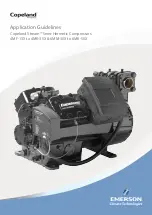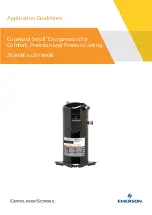
36
A-17
Footnote 1: Note: Typical air dryer cartridge replacement schedule is every 3 yrs/ 300K miles for low air use vehicles and every year/100K miles for high
air use vehicles.
Footnote 2: To get an accurate reading for the amount of oil collected during a 30 day period, ask the customer not to drain the air tanks before returning.
(Note that 30-90 days is the recommended air tank drain schedule for vehicles equipped with a Bendix air dryer that are properly maintained.) If, in cold
weather conditions, the 30 day air tank drain schedule is longer than the customer's usual draining interval, the customer must determine, based on its
experience with the vehicle, whether to participate now, or wait for warmer weather. See the cold weather tips in Bulletins TCH-008-021 and TCH-008-022
(included in Appendix B of the advanced troubleshooting guide).
Note for returning vehicles that are being
re-tested after a water/cloudy emulsion
mixture was found last time and the air
dryer cartridge replaced: If more than one
oil unit of water or a cloudy emulsion mixture
is found
again, stop the BASIC
™
test and
consult the air dryer's Service Data sheet
troubleshooting section.
*
Note: A confirmed complaint
above
does NOT mean that
the compressor must be
replaced.
The full BASIC
™
test below will
investigate the facts.
Customer’s
Have you confirmed
complaint?
(Please check all that apply)
“Relay valve
leaks oil /
malfunctions”
no
yes
*
“Dash valve
leaks oil /
malfunctions”
no
yes
*
“Air dryer leaks oil”
no
yes
*
“Governor malfunction”
no
yes
*
“Oil in gladhands”
no
yes
*
how much oil did you find? _____________________________
“Oil on ground or vehicle exterior”
no
yes
*
amount described: ___________________________________
“Short air dryer cartridge life”
replaces every: ______________
miles,
kms, or
months
“Oil in air tanks” amount
described:_______________________
We will measure amount currently found when we get to step B of the test.
“Excessive engine oil loss”
amount described: _____________
Is the engine leaking oil?
no
yes
*
Is the compressor leaking oil?
no
yes
*
Other complaint: __________________________________
No customer complaint.
Checklist for Technician
The Service Writer fills out these fields with information gained from the customer
The Service Writer
also checks off any
complaints that the
customer makes to
help the Technician in
investigating.
The Technician
checks boxes
for any of the
complaints that
can be confirmed.
STEP A
- Select one:
BASIC
™
test starts here:
STEP B
- Measure the Charging System Contents
The Technician selects the air use
category for the vehicle. This decides
which of the two acceptance lines on
the cup will be used for the test below.
For an accurate test, the
contents of all the air tanks on
the vehicle should be used.
Then go to Step B.
Number of Days Since Air Tanks Were Last Drained: ________ Date: ___________Vehicle #: ___________
Engine SN ________________________Vehicle Used for: _______________Typical Load:________ (lbs.)
No. of Axles: ____ (tractor) ____ (trailer) No. of Lift Axles: ____ Technician’s Name: __________________
This is a low air use vehicle: Line haul (single trailer) with 5 or less axles,
or
This is a high air use vehicle: Garbage truck, transit bus, bulk unloader, or line
haul with more than 5 axles.
1. Park and chock vehicle on level ground. Drain the air system by
pumping the service brakes.
2. Completely drain ALL the air tanks into a single BASIC
™
cup.
3. If there is less than one unit of contents total, end the test now and
return the vehicle to service. Vehicle passes.
4.
If
more than one oil unit of water (or a cloudy emulsion mixture)
is found:
Otherwise,
go to Step C.
Filling in the Checklist for the
B
endix
®
A
ir
S
ystem
I
nspection
C
up (BASIC
™
) Test
Note: Follow all standard safety precautions. For vehicles using a desiccant air dryer.
Appendix B continued: Information about the BASIC
™
Test Kit (Bendix P/N 5013711)
(a) Change the vehicle’s air dryer cartridge
- see Footnote 1,
(b) Conduct the 4 minute leakage test (Step D),
(c)
STOP the inspection, and check the vehicle
again after 30 days - see Footnote 2.
STOP
+ CK.
Oil
Units






































